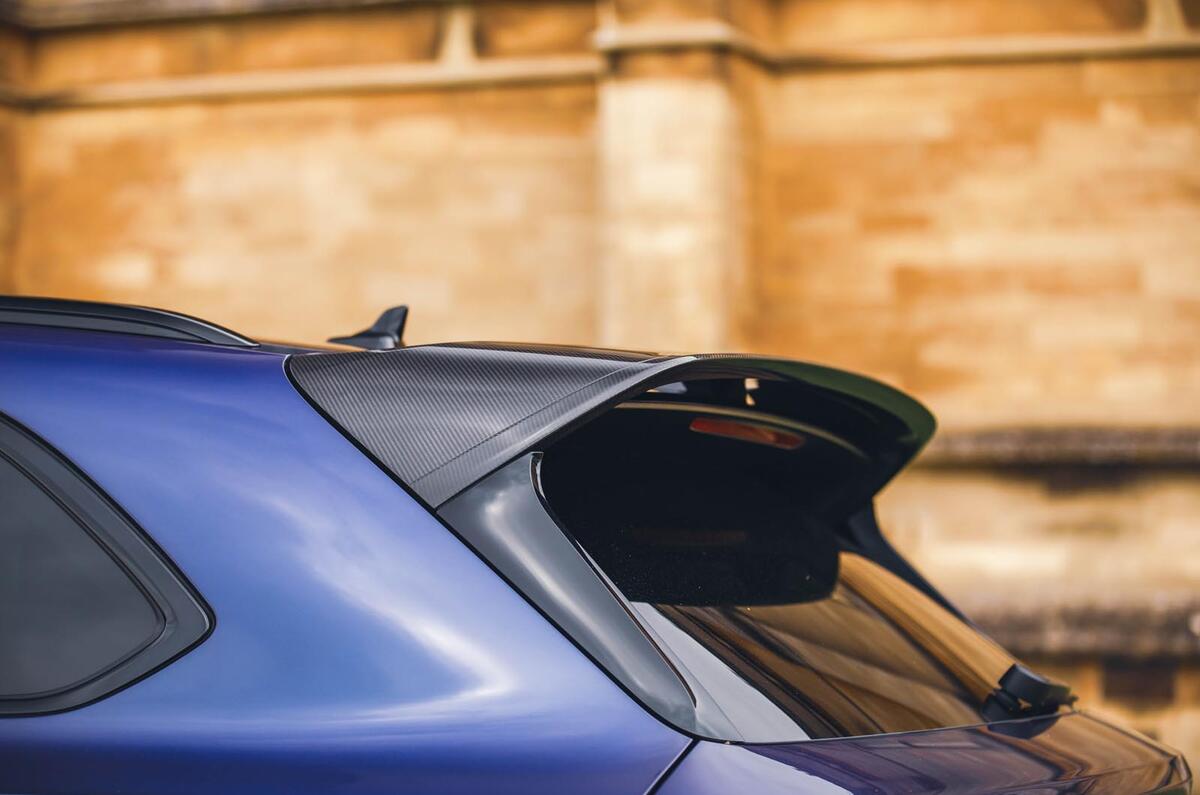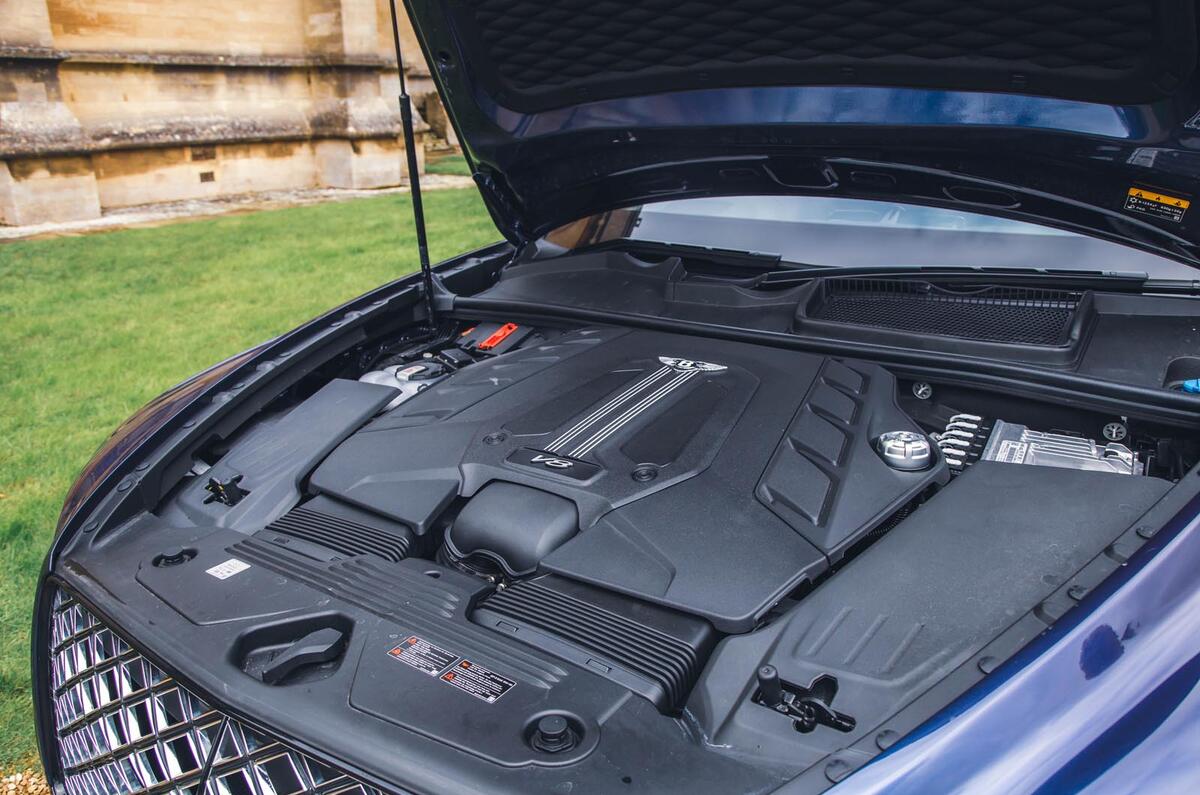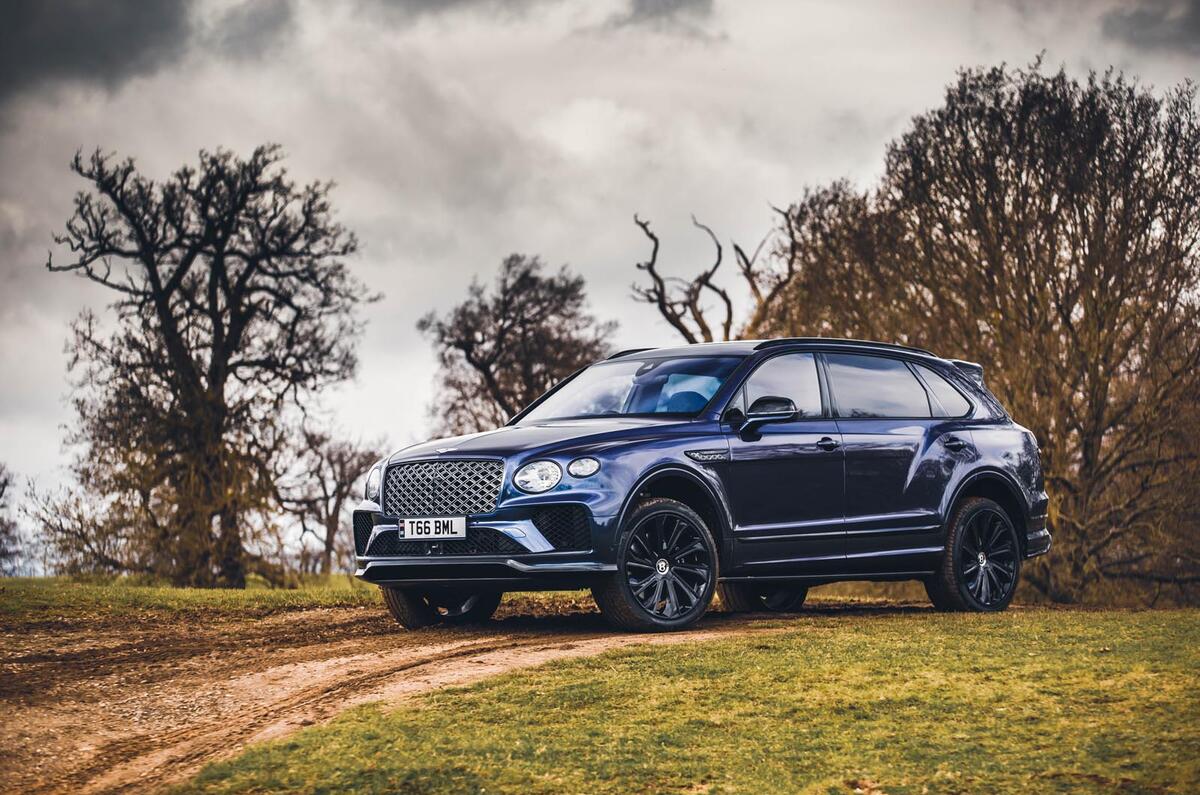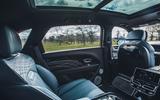The Bentayga’s cabin has changed little in broad terms since 2016. However, such is its lavishness and comfort that criticising it on the basis of age is akin to questioning the kerbside drama an Aventador generates simply because the supercar has been around a while. This remains one of the best-appointed cockpits of any car.
We won’t dwell overly long on the front because, for the EWB, the real news is in the back. It suffices to say that, in its ergonomics, the Bentayga continues to strike a sweet balance of high-riding expansiveness and reassuring envelopment in leather and wood veneer. Incidentally, the EWB is the first series-production Bentley to offer 0.07mm-thick Metal Overlay veneer as an option, which has the look of something from the workshops of Roger W Smith. On our test car, the leather was flawless and the soft, delicate, sunk stitching straight. It’s a lovingly wrought place, for sure.
What criticisms we have are minor. The steering wheel of our test car was ever so slightly offset to the left in its alignment with the seat (heated, ventilated and with massage function, naturally). Some of the chromed gear, including the organ-stop vent controls, feel plasticky – in contrast to, for example, the rotary dial with which you select the car’s myriad on- and off-road driving modes. That is made in icily cold, hard, knurled aluminium and is a quiet joy to grasp.
Lastly, the infotainment and climate control switchgear is feeling its age. However, we are loath to criticise the simple functionality of these buttons and dials. They do the job, and do it well.
The same applies to the central touchscreen. At just 10.9in, it is diddy by today’s standards and this can make some of the menu options difficult to pin down. But it works and it doesn’t dominate the ambience, as digital arrays often do. We like this about the Bentayga.
And so to the back. In look and feel, the EWB doesn’t exhibit the pillowy softness of a Mercedes-Maybach S600 or the monolithic (and faintly intimidating) grandeur of a Rolls-Royce. It exists between the two and is therefore well judged indeed. As standard, the car comes with a 4+1 layout but in Mulliner guise upgrades to Airline Seat spec. This comprises two seats that can be reclined up to 40deg.
Take it as read that leg room is spectacular. The 940mm the passenger behind the driver is treated to falls only a little short of what you get in the 5.8m-long Rolls-Royce Phantom. However, the nearside rear passenger can request ‘VIP’ mode via a touchscreen. This slides the front seat forward, unfurls a carpeted footrest and increases leg room to 1200mm, which is more than any sensible person would know what to do with. The seats can also monitor and adjust for temperature and surface humidity, while six air-pocket ‘pressure zones’ imperceptibly alter as much as once every minute to relieve strain and stress points.
Factor in such generous forward-facing space, such rich materials, a panoramic roof and slim, sporting windows, and when travelling at speed the EWB passenger has an experience that could easily have originated in the mind of Jules Verne.
Multimedia system

The Bentayga is not offered with a rotating display (which allows you to hide the screen entirely) like the Continental GT, but at 10.9in the display is not obtrusively large and it is neatly embedded into the car’s vast dashboard. The graphics are not pin-sharp, as they are in a Mercedes GLS, but this is a decently crisp offering and easily navigable once you’re accustomed to hitting icons that are a touch smaller than ideal. That said, the large-scale physical shortcut buttons beneath the screen are welcome indeed, offering ease of use that’s conspicuously lacking in other cars.
The latest Bentayga also comes with Apple CarPlay and Android Auto functionality, and both systems integrate well. As for sound, you might want to consider the £7065 Naim for Bentley system. It is magnificently powerful and has great clarity, though it stops short of dropping jaws.



































































